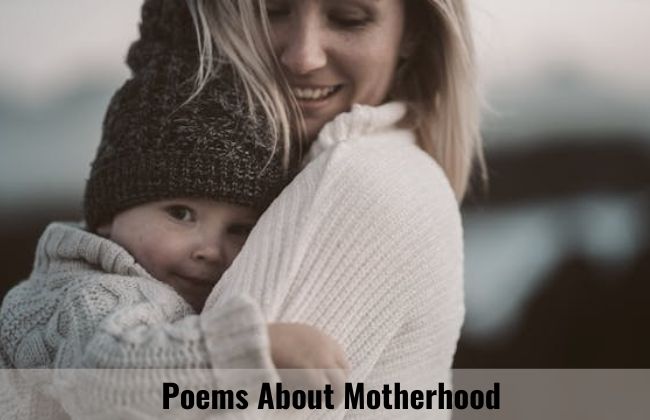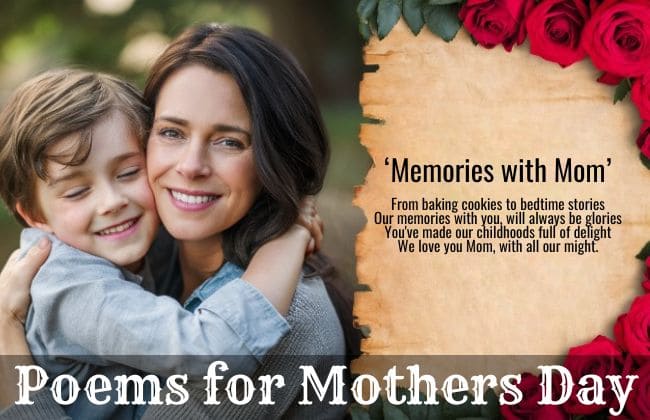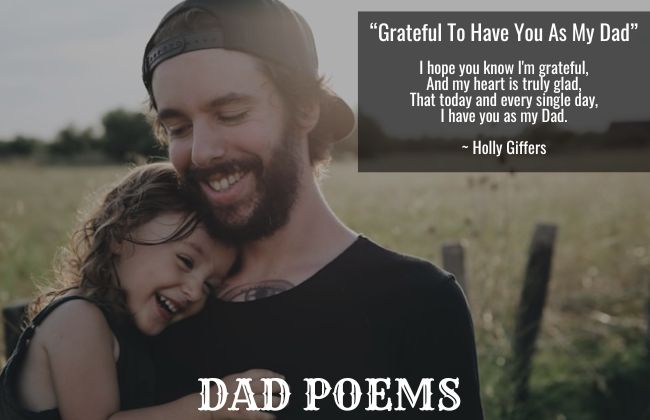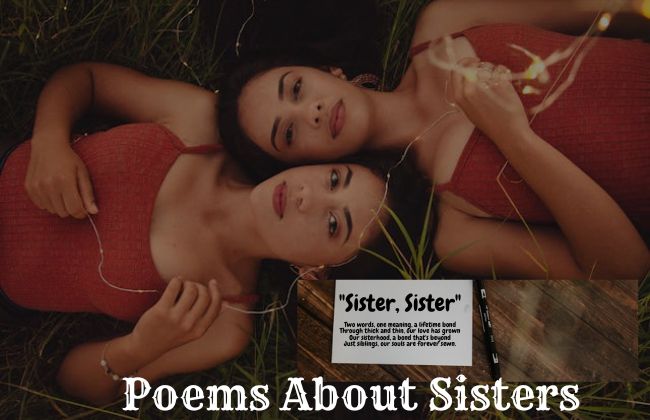As Halloween approaches, our interest in exploring the mysterious and spectral grows. Poetry, with its unique ability to capture emotions and create atmospheres, becomes the perfect tool to delve into this season of mysteries and enchantments.
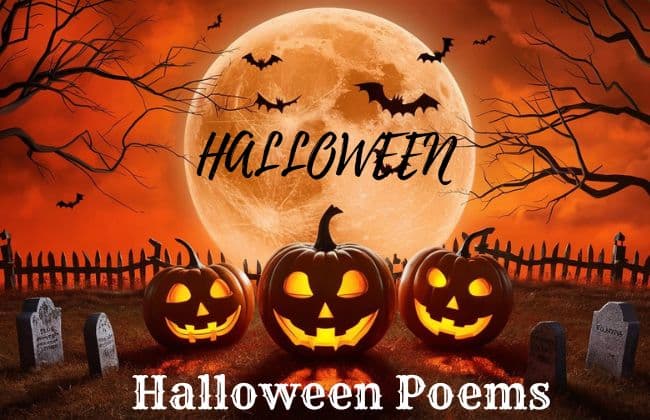
In this article, you will discover a collection of 15 carefully selected poems that will transport you to the heart of Halloween, mixing charm with chills.
This collection ranges from classic pieces, rich in traditions and legends, to contemporary creations that offer a new perspective on the paranormal.
Each poem is chosen for its ability to evoke the haunting spirit of the holiday and its power to connect with the reader on an emotional and sensory level.
Prepare to be taken on a literary journey that blurs the line between reality and the imaginary, perfect for immersing yourself on All Hallows’ Eve. Experience the magic of Halloween through words that conjure.
Table of Contents
- 1 1) ‘The Raven’ by Edgar Allan Poe
- 2 2) ‘The Haunted House’ by Thomas Hood
- 3 3) ‘Witch’s Chant’ from Macbeth by William Shakespeare
- 4 4) ‘All Souls’ Night, 1917′ by Hortense King Flexner
- 5 5) ‘Omens’ by cecilia llompart
- 6 6) ‘Her Strong Enchantments Failing’ by A.E. Housman
- 7 7) ‘Ghost House’ by Robert Frost
- 8 8) ‘Theme in Yellow’ by Carl Sandburg
- 9 9) ‘The Hag’ by Robert Herrick
- 10 10) ‘Hallowe’en’ by Joel Benton
- 11 11) ‘Spirits of the Dead’ by Edgar Allan Poe
- 12 12) ‘The Pumpkin’ by John Greenleaf Whittier
- 13 13) ‘Haunted Houses’ by Henry Wadsworth Longfellow
- 14 14) ‘The Witch’ by Mary Elizabeth Coleridge
- 15 15) ‘A Child’s Nightmare’ by Robert Graves
- 16 Themes in Halloween Poetry
- 17 Writing Your Own Halloween Poem
1) ‘The Raven’ by Edgar Allan Poe
Edgar Allan Poe’s “The Raven” is one of the most recognized Gothic poems ever written. Published in 1845, it brought Poe widespread fame.
This narrative poem is renowned for its musicality, stylized language, and supernatural atmosphere. It tells the haunting tale of a man tormented by the visit of a mysterious raven that speaks only the word “Nevermore.”
The poem is celebrated for its exploration of themes such as grief, loss, and madness. The imagery and symbolism within “The Raven” create a profound sense of melancholy and despair.
Poe’s innovative use of meter and rhyme scheme enhances the poem’s hypnotic effect. His choice of the raven, a bird often associated with ill omens, serves to deepen the poem’s somber tone.
The Raven
Once upon a midnight dreary, while I pondered, weak and weary,
Over many a quaint and curious volume of forgotten lore,
While I nodded, nearly napping, suddenly there came a tapping,
As of some one gently rapping, rapping at my chamber door.
"'Tis some visitor," I muttered, "tapping at my chamber door-
Only this, and nothing more."…)
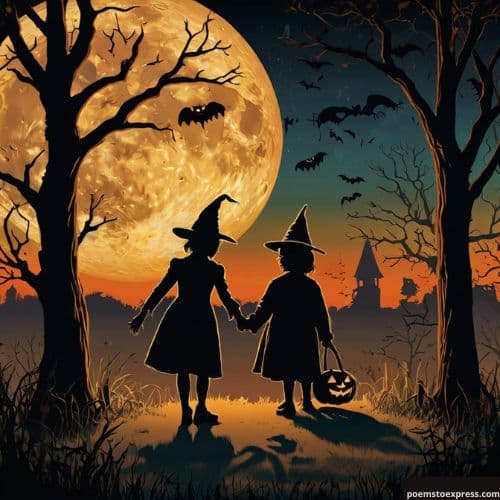
2) ‘The Haunted House’ by Thomas Hood
Thomas Hood’s poem “The Haunted House” embodies the quintessential elements of the Gothic tradition. It creates an eerie atmosphere, marked by a sense of mystery and foreboding. The house is described as dreary, hinting at a dark and ominous past.
Hood explores themes of death and decay, emphasizing the supernatural through vivid imagery. The house is empty of life, adding to its unsettling character. Its desolation serves as a reminder of hidden tragedies and the passage of time.
Symbolic elements like excommunication and abandoned structures enhance the poem’s haunting mood. The absence of domestic warmth underscores a prevalent feeling of loss and doom.
Hood’s work captures the chilling allure of haunted spaces, making it a lasting piece in Gothic literature.
The Haunted House
A Romance
A jolly place, said he, in times of old,
But something ails it now; the place is curst.
Hart-Leap Well, By Wordsworth…
3) ‘Witch’s Chant’ from Macbeth by William Shakespeare
‘Witch’s Chant’ from “Macbeth” by William Shakespeare is a famous and haunting segment of the play. This chant is found in Act 4, Scene 1, and it is recited by the three witches, capturing the eerie and mystical atmosphere associated with them.
The chant begins with the lines “Double, double toil and trouble; Fire burn, and cauldron bubble.” These lines highlight the witches’ role in brewing dark and ominous spells. The sinister imagery and rhythmic repetition create a strong, dramatic effect.
Shakespeare uses the chant to foreshadow impending chaos and the witches’ influence over Macbeth’s fate. Their words stir the audience’s imagination, enriching the play’s theme of supernatural interference.
This passage continues to be iconic in literature, embodying the malevolent aura surrounding witchcraft in “Macbeth.”
Witches Chant (From Macbeth)
Round about the couldron go:
In the poisones entrails throw.
Toad,that under cold stone
Days and nights has thirty-one
Sweated venom sleeping got,
Boil thou first in the charmed pot.
Double,double toil and trouble;
Fire burn and cauldron bubble…
4) ‘All Souls’ Night, 1917′ by Hortense King Flexner
Hortense King Flexner’s poem “All Souls’ Night, 1917” evokes a haunting atmosphere. It captures the melancholy of a night when the boundary between the living and the dead blurs. The poem begins with an image of logs heaped in a room, setting an intimate and eerie scene.
Silent and veiled figures peer from the hills, embodying the spirits of young lovers lost to death. These restless souls wander the world, searching for the warmth and familiarity of life they once knew. The poem skillfully intertwines themes of memory and loss, providing a poignant reflection on love and the ethereal nature of All Souls’ Night.
Flexner’s use of vivid imagery and emotive language offers readers an intense experience, bridging the gap between past and present. Her work highlights the universal longing for connection with those who have passed.
All Souls' Night, 1917
You heap the logs and try to fill
The little room with words and cheer,
But silent feet are on the hill,
Across the window veiled eyes peer.
The hosts of lovers, young in death,
Go seeking down the world to-night,
Remembering faces, warmth and breath—
And they shall seek till it is light.
Then let the white-flaked logs burn low,
Lest those who drift before the storm
See gladness on our hearth and know
There is no flame can make them warm.
5) ‘Omens’ by cecilia llompart
The poem “Omens” by Cecilia Llompart explores themes of change, mystery, and uncertainty through a series of symbolic and dark images.
The work contemplates omens and signs from a contemporary perspective, linking ancient oracles with modern symbols, and invites readers to question their understanding of the world and the signs they encounter within it.
Llompart employs elements such as a dead bird, a drowned man, and disturbing dreams to reflect on human interpretations and responses to the unknown.
Omens
The dead bird, color of a bruise,
and smaller than an eye
swollen shut,
is king among omens.
Who can blame the ants for feasting?
Let him cast the first crumb….
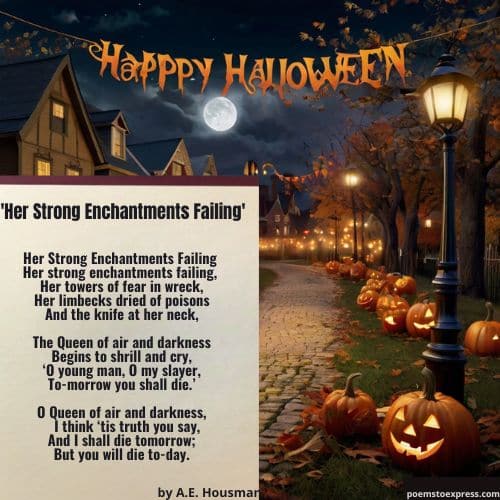
6) ‘Her Strong Enchantments Failing’ by A.E. Housman
A.E. Housman’s poem “Her Strong Enchantments Failing” appears in his 1922 collection, “Last Poems.” The work captures a dramatic and haunting encounter between the protagonist and the Queen of air and darkness.
The poem conveys the vulnerability of the Queen, whose power is waning. Her “towers of fear” are in ruin, and she is confronted with imminent defeat.
The young man’s interaction with the Queen is intense. She declares his impending death, yet he responds with the notion that she will meet her end sooner. This exchange emphasizes themes of mortality and the inevitability of doom.
Housman’s use of vivid imagery and concise dialogue creates a tense atmosphere, reflecting the inevitable fall of those who wield power through fear and enchantment.
The poem’s brevity and poignant language contribute to its lasting impact, making it a fitting inclusion in discussions of Halloween-themed literature.
"Her Strong Enchantments Failing"
Her strong enchantments failing,
Her towers of fear in wreck,
Her limbecks dried of poisons
And the knife at her neck,
The Queen of air and darkness
Begins to shrill and cry,
‘O young man, O my slayer,
To-morrow you shall die.’
O Queen of air and darkness,
I think ‘tis truth you say,
And I shall die tomorrow;
But you will die to-day.
7) ‘Ghost House’ by Robert Frost
“Ghost House” by Robert Frost captures the eerie atmosphere of an abandoned, decaying home. The poem reflects themes of solitude, memory, and nature’s persistence. Frost’s use of rural imagery paints a vivid picture of the house’s surroundings.
He skillfully contrasts the home’s forgotten past with its current state of neglect. The imagery evokes a sense of quiet haunting that is typical of Frost’s work. The poem highlights the intersection of human abandonment and nature’s reclamation.
Frost’s masterful use of simple, colloquial language allows readers to connect deeply with the setting and mood. Through “Ghost House,” he explores the passage of time and the inevitable return of nature to reclaim human spaces.
"Ghost House"
I dwell in a lonely house I know
That vanished many a summer ago,
And left no trace but the cellar walls,
And a cellar in which the daylight falls
And the purple-stemmed wild raspberries grow…
8) ‘Theme in Yellow’ by Carl Sandburg
Carl Sandburg’s “Theme in Yellow” presents a unique perspective on Halloween through the eyes of a pumpkin. This poem personifies the pumpkin, emphasizing its vibrant transformation from yellow to a rich orange hue typical of the season.
The poem paints vivid imagery of autumn landscapes dotted with glowing yellow and orange pumpkins, contributing a sense of warmth and festivity.
With its focus on Halloween, the poem captures both the playful and mysterious aspects of the holiday. It celebrates the visual spectacle of pumpkins becoming Jack-o-lanterns, embodying the spirit of Halloween with simple yet evocative language.
Theme In Yellow
I spot the hills
With yellow balls in autumn.
I light the prairie cornfields
Orange and tawny gold clusters
And I am called pumpkins.
On the last of October
When dusk is fallen
Children join hands
And circle round me
Singing ghost songs
And love to the harvest moon;
I am a jack-o'-lantern
With terrible teeth
And the children know
I am fooling.
9) ‘The Hag’ by Robert Herrick
“The Hag” by Robert Herrick is a vividly descriptive poem that captures the eerie flight of a witch.
Through this piece, Herrick paints a fantastical night scene where the witch sets off on her mysterious journey. The imagery skillfully evokes an atmosphere suitable for the spookiest of Halloween nights.
Herrick, a 17th-century English poet, is widely known for his lyrical works but occasionally ventured into darker themes. In “The Hag,” he portrays the witch astride her broom, racing through the night sky, accompanied by sinister forces.
This poem provides a glimpse into the supernatural and reflects the era’s fascination with witchcraft and the mystical.
Ideal for Halloween, “The Hag” invites readers into the world of myth and imagination. Herrick’s ability to create suspense and wonder adds to its charm, making it an enduring spooky classic.
The Hag
The Hag is astride,
This night for to ride;
The Devill and shee together:
Through thick, and through thin,
Now out, and then in,
Though ne'r so foule be the weather…
10) ‘Hallowe’en’ by Joel Benton
“Hallowe’en” by Joel Benton is a classic poem that explores the whimsical and mysterious elements of Halloween night. The poem features enchanting creatures like pixies, kobolds, elves, and sprites, who are described as being active in the moonlight.
Benton captures the playful and eerie atmosphere of Halloween with imagery that includes elements such as moonlight and various supernatural beings. This reflects a fascination with folklore and the playful mischief associated with this holiday.
Published in the late 19th century, the poem remains a popular choice for those seeking to capture the nostalgic essence of Halloween. It stands as an example of how literature has historically explored the themes of fantasy and mystery during this time of year.
Joel Benton’s work continues to be appreciated for its imaginative and vivid portrayal of Halloween traditions.
Hallowe'en
Pixie, kobold, elf, and sprite
All are on their rounds to-night,—
In the wan moon’s silver ray
Thrives their helter-skelter play.,,
11) ‘Spirits of the Dead’ by Edgar Allan Poe
“Spirits of the Dead” is a poem by Edgar Allan Poe that explores themes of solitude, mortality, and the presence of the afterlife.
Written in 1827, the poem paints a vivid picture of a silent graveyard, where the living soul is surrounded by the spirits of the dead.
Poe uses this setting to evoke feelings of mystery and unease. The speaker in the poem warns of how the spirits from beyond overshadow one’s soul, creating an atmosphere that is both haunting and deeply introspective.
This work beautifully captures Poe’s fascination with the macabre and the unknown. It reflects his ability to intertwine beauty with horror, inviting readers to contemplate the thin boundary between life and death.
As part of Poe’s larger oeuvre, “Spirits of the Dead” stands as a testament to his poetic craftsmanship and enduring legacy in Gothic literature.
Spirits of the Dead
Thy soul shall find itself alone
’Mid dark thoughts of the gray tombstone—
Not one, of all the crowd, to pry
Into thine hour of secrecy…
12) ‘The Pumpkin’ by John Greenleaf Whittier
John Greenleaf Whittier’s poem “The Pumpkin” captures the charm and significance of pumpkins in a way that resonates deeply with the spirit of autumn and festivities.
The poem weaves connections between pumpkins and cultural traditions, drawing on Whittier’s memories to highlight their role in seasonal celebrations like Thanksgiving.
Whittier uses vivid imagery to paint a picture of lush vines and golden blossoms, inviting readers to appreciate the pumpkin’s beauty and symbolic importance.
His words evoke warmth and nostalgia, making it a classic piece for the Halloween season.
The Pumpkin
Oh, greenly and fair in the lands of the sun,
The vines of the gourd and the rich melon run,
And the rock and the tree and the cottage enfold,
With broad leaves all greenness and blossoms all gold,
Like that which o'er Nineveh's prophet once grew,
While he waited to know that his warning was true,
And longed for the storm-cloud, and listened in vain
For the rush of the whirlwind and red fire-rain…
13) ‘Haunted Houses’ by Henry Wadsworth Longfellow
“Haunted Houses” is a poem by Henry Wadsworth Longfellow exploring themes of the supernatural. The poem vividly depicts homes where spirits and ghosts of the past reside. Longfellow masterfully blends the earthly with the ethereal.
In the poem, Longfellow describes phantoms gliding silently through the halls. These spectral images paint a picture of an unseen world alongside the familiar. The tone of the poem suggests a certain naturalness to these hauntings.
The poem is part of Longfellow’s “Birds of Passage” collection, reflecting his interest in life, death, and what lies beyond. He conveys the continuous connection between the living and the departed, creating a bridge of light between the realms.
Overall, “Haunted Houses” captures the essence of Halloween with its ghostly imagery, immersing readers in the quiet but haunting presence of spirits in our homes.
Haunted Houses
All houses wherein men have lived and died
Are haunted houses. Through the open doors
The harmless phantoms on their errands glide,
With feet that make no sound upon the floors.
We meet them at the door-way, on the stair,
Along the passages they come and go,
Impalpable impressions on the air,
A sense of something moving to and fro…
14) ‘The Witch’ by Mary Elizabeth Coleridge
‘The Witch’ is a captivating poem by Mary Elizabeth Coleridge. It presents a mysterious narrative that draws readers into the world of a wanderer seeking refuge.
The poem is structured in three stanzas, creating a rhythm that enhances its haunting atmosphere. The rhyme scheme of ABCBDEE adds to its lyrical quality.
A central theme is the interaction between the wanderer, often perceived as a witch, and the household she encounters. The poem’s simple yet evocative language paints vivid imagery of the harsh elements and isolation.
Mary Elizabeth Coleridge skillfully conveys the emotional intensity of the witch’s plea, leaving readers pondering the deeper implications of her arrival.
The Witch
I have walked a great while over the snow,
And I am not tall nor strong.
My clothes are wet, and my teeth are set,
And the way was hard and long.
I have wandered over the fruitful earth,
But I never came here before…
15) ‘A Child’s Nightmare’ by Robert Graves
‘A Child’s Nightmare’ by Robert Graves explores the recurring fear of a young child haunted by eerie visions. The poem presents a shadowy figure that stands vigil beside the child’s bed.
The specter, with its ominous presence, weaves a nightmarish tapestry filled with whispers and unsettling sounds.
Graves employs imagery and sound to bring the dreamscape to life. The repetition of words and sounds enhances the eerie atmosphere, emphasizing the persistence of childhood fears. This technique captures how these fears linger, even as the child grows.
The haunting nature of the poem speaks to the universal experience of childhood nightmares. Through simplistic yet powerful language, Graves conveys the inescapability of such fears, resonating with readers who recall their own nighttime terrors.
It is a reflection on how these dreams can imprint on the psyche long after the nursery years.
A Child's Nightmare
Through long nursery nights he stood
By my bed unwearying,
Loomed gigantic, formless, queer,
Purring in my haunted ear
That same hideous nightmare thing,
Talking, as he lapped my blood,…
Themes in Halloween Poetry
Halloween poetry often captivates with its rich imagery, evoking chilling visuals, and the pervasive sense of mystery and fear.
These elements are central in crafting the eerie atmosphere typically associated with this genre.
The Use of Imagery
Imagery in Halloween poetry paints vivid pictures that immerse readers in the haunted worlds depicted by poets. Through striking descriptions, such as shadowy landscapes and moonlit nights, poets like Edgar Allan Poe bring scenes to life.
The use of symbolic colors like black for death and deep red for blood enhances the macabre feel. Creatures like ghosts, witches, and vampires are depicted with elaborate detail, adding depth to these supernatural tales. Sensory details also play a crucial role in invoking the chilling ambiance of All Hallows’ Eve.
Elements of Fear and Mystery
Fear and mystery are central to Halloween poetry, with many poems exploring themes of the unknown and supernatural. Poets create suspense by introducing uncertain outcomes and ambiguous characters. The presence of unknown forces lurking in the dark heightens anxiety.
Riddles and unanswered questions can drive narratives, leaving readers unsettled. This tension between reality and supernatural occurrences is a hallmark of the genre, drawing readers into the enigmatic and shadowy world of Halloween tales.
Writing Your Own Halloween Poem
When crafting a Halloween poem, incorporating traditional symbols and creating a spooky atmosphere are crucial.
These elements help set the mood and evoke the eerie essence of Halloween.
Incorporating Halloween Symbols
Symbols like pumpkins, ghosts, witches, and black cats add authenticity to Halloween poems. Using these traditional elements can create an engaging and relatable experience for the reader.
To start, list a variety of Halloween symbols. Decide which are most relevant to the poem’s theme. Incorporate vivid imagery to bring these symbols to life. For instance, describe a ghost’s translucent form or a pumpkin’s flickering glow.
Consider using figurative language, such as similes and metaphors, to enhance descriptions. Discussing a witch’s cackle as vile as nails on a chalkboard adds depth. Let these symbols drive the narrative or the poem’s imagery.
Crafting a Spooky Atmosphere
The atmosphere of a Halloween poem should evoke a sense of mystery and unease. Achieving this requires a combination of setting, word choice, and tone.
Select settings that are inherently eerie: moonlit graveyards, abandoned houses, or dark forests. These locations naturally lend themselves to creating tension. Use adjectives and verbs that embody fear—words like “haunting,” “shiver,” or “lurking” can effectively convey mood.
Rhyme and rhythm can also influence the atmosphere. A slower rhythm might impart suspense, while a quick tempo could flag urgency.
Employ sound devices like alliteration or onomatopoeia to enhance the chilling effect. The whisper of wind or the creak of a door adds to the immersive experience.
You might also like:


